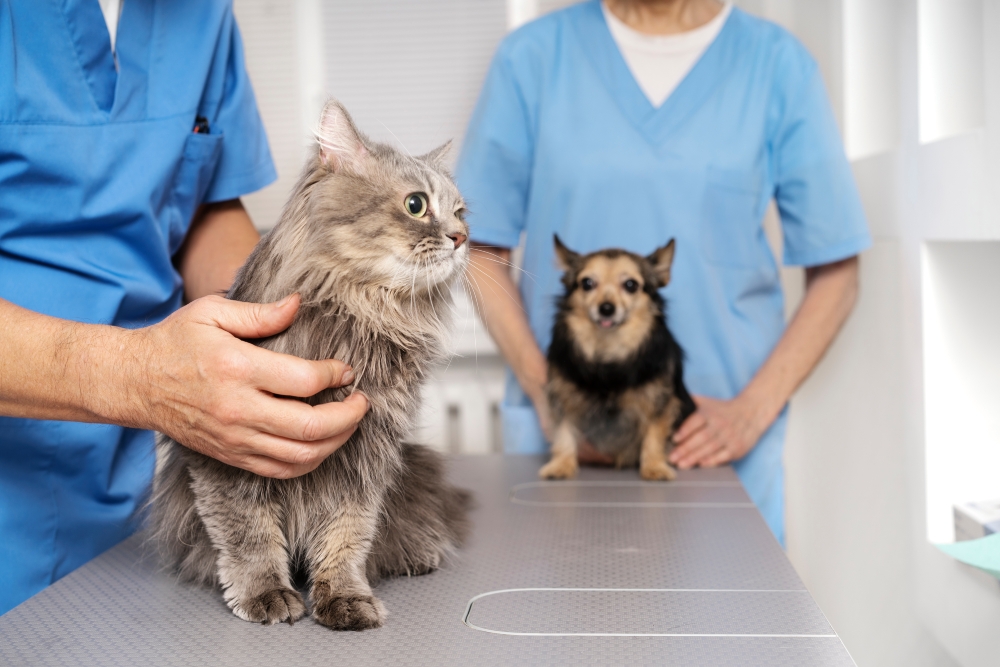Keeping a pet happy and healthy goes far beyond belly rubs and long walks. Nutrition plays a massive role in your pet’s quality of life. A licensed veterinarian knows that proper feeding isn’t just about avoiding table scraps—it’s about fueling your pet’s body with the right nutrients at every stage of life. Whether you’re new to pet parenting or looking to optimize your furry friend’s diet, these tips from a trusted veterinarian in Ames will guide the way.
Step 1: Understand Pet Nutritional Needs by Life Stage
Just like humans, pets have different nutritional needs depending on their age. Puppies and kittens need more calories, protein, and certain vitamins to support growth, while senior pets benefit from joint support and controlled calorie intake.
Tip: Look for pet food labeled specifically for your pet’s life stage. A veterinarian nearby can help evaluate whether your pet is eating age-appropriate food.
Example: A senior dog with joint pain might benefit from a formula rich in omega-3 fatty acids and glucosamine—something your veterinarian can help you find.
Step 2: Learn to Read Pet Food Labels
Pet food packaging can be misleading. Terms like “premium” or “natural” aren’t always backed by meaningful standards. Instead, check for an AAFCO (Association of American Feed Control Officials) statement on the label, which ensures the food meets minimum nutritional requirements.
Tip: If a food says “formulated to meet the nutritional levels established by the AAFCO Dog Food Nutrient Profiles,” you’re on the right track.
Need help decoding a confusing label? A veterinarian near me search can lead you to local experts like the team at Pet Medical Center, who can walk you through it.
Step 3: Avoid Common Feeding Mistakes
Overfeeding and underfeeding are two of the most common issues veterinarians encounter. Portion sizes should be based on your pet’s size, activity level, and overall health.
Common mistakes to avoid:
-
Free-feeding (leaving food out all day)
-
Feeding pets human leftovers
-
Misjudging treat calories (treats should only make up 10% of daily intake)
Example: A 15-pound dog likely needs 400–500 calories a day—add 5 treats at 50 calories each, and suddenly you’re overfeeding without realizing it.
Tip: Weigh your pet monthly and consult your veterinarian in Ames if you notice any sudden weight changes.
Step 4: Choose the Right Type of Food
Dry kibble, wet food, raw diets—each has pros and cons. The best choice often depends on your pet’s needs, your lifestyle, and what your veterinarian recommends.
-
Dry food: Convenient and cost-effective
-
Wet food: Hydrating and tasty for picky eaters
-
Raw diets: Gaining popularity, but must be handled carefully to avoid bacterial contamination
Before switching, check with a veterinarian nearby, such as the specialists at the company, to make sure the diet is balanced and safe.
Step 5: Provide Fresh Water—Always
It might sound simple, but hydration is often overlooked. Pets need access to clean, fresh water at all times, especially in warmer months or if they’re on dry kibble.
Tip: Wash your pet’s water bowl daily. Bacteria can build up quickly in stagnant water.
Pro tip: If your pet doesn’t drink much, try adding water to their food or using a pet water fountain to encourage more frequent sipping.
Step 6: Consider Supplements—With Veterinary Guidance
Supplements like fish oil, probiotics, or joint support chews can benefit pets—but only when used properly. Some pets may not need them, and overdosing certain supplements can do more harm than good.
Example: A dog with itchy skin might benefit from an omega-3 supplement, but giving too much can lead to digestive upset or nutrient imbalance.
Tip: Talk to a veterinarian near me—or schedule a visit with Pet Medical Center—before adding anything to your pet’s routine.
Step 7: Monitor and Adjust Regularly
Nutrition isn’t a set-it-and-forget-it kind of deal. Your pet’s dietary needs can change due to age, illness, or lifestyle changes. It’s a good idea to schedule a nutrition check-in during your annual vet visit.
Tip: Keep a food journal. Note changes in appetite, energy levels, coat quality, or digestion after switching foods.
The experienced staff at Pet Medical Center encourages routine wellness exams to keep tabs on how diet is impacting your pet’s overall health.
Final Thoughts
Your pet can’t choose what goes in the bowl—but you can, and you’ve got expert support to do it right. By understanding life-stage nutrition, reading labels, avoiding common mistakes, and partnering with a veterinarian in Ames, you’re giving your furry friend the best shot at a long, healthy life.
Need help customizing a meal plan for your pet? Book a consultation with the professionals at Pet Medical Center, where expert care and nutritional advice go paw in paw.
Media Contact
Company Name: Pet Medical Center
Contact Person: Support
Email: Send Email
Phone: +15152327204
Address:1416 S Duff Ave
City: Ames
State: IA 50010
Country: United States
Website: https://www.pmcofames.com/

